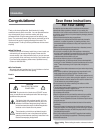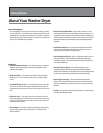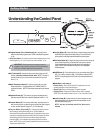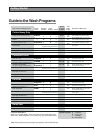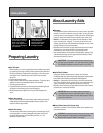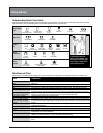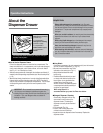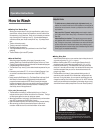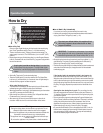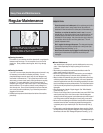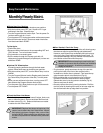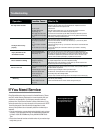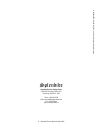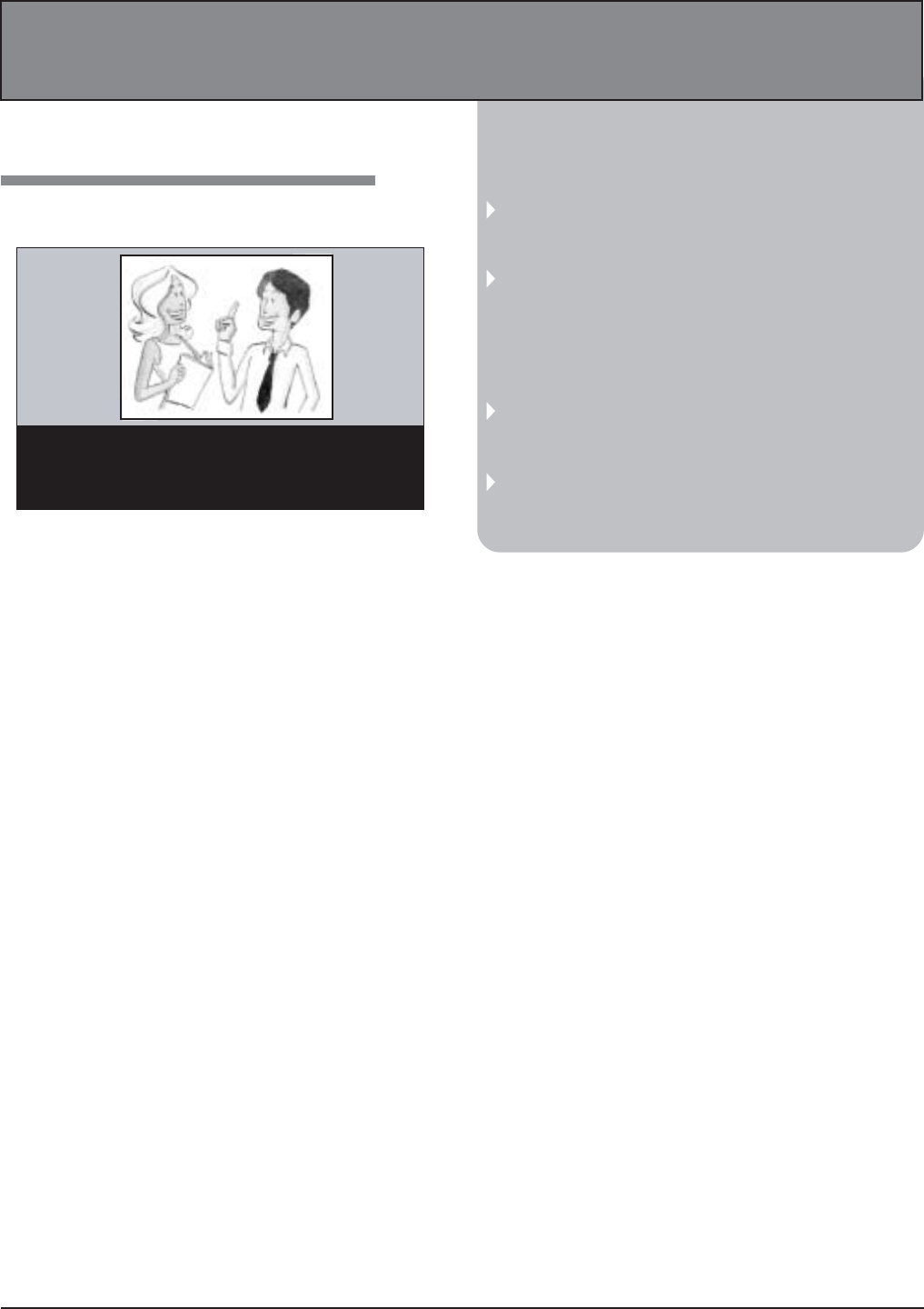
16
Easy Care and Maintenance
nCleaning the exterior:
The exterior of your machine should be cleaned with a rag dipped in
lukewarm water and soap. Do not use polish of any kind on the
plastic trim. Some polishes contain agents, which may damage
plastics.
nCleaning the Interior:
If you live in an area where phosphate detergents are banned, it may
be necessary to recondition the washer periodically. If a non-
phosphate detergent must be used, body oils and detergent may
accumulate in the washer tub. This is particularly evident in hard
water areas or homes where heavily soiled garments are regularly
laundered. To remove this buildup, run the washer through a
complete cycle using HOT water and 2 cups of a non-precipitating
water conditioner. Do not add any clothes, laundry detergent, or
other laundry aids. Once all the accumulation has been removed,
your laundry should be satisfactory if you follow the preventative
suggestions in this book.
• Qualified service personnel should clean the interior of the machine
periodically.
"It's Easy! With just a bit of care, your washer-dryer
will repay you with loyalty and devotion. With the
necessary upkeep, it will give you excellent washing
and drying results for years to come."
nGeneral Maintenance:
Your washer-dryer is designed to provide reliable service over many
years. A few simple steps will help to prolong its life and avoid
problems:
• After washing is complete, the water faucets should be turned off to
relieve water pressure on the hoses.
• Before moving you washer-dryer to a new location, you must reattach
the transit screws/spacers you removed during installation (p. 5).
• Wipe the inside of the washer-dryer door with a soft cloth to remove any
remaining moisture after washing. Periodically, a thin coat of paste wax
should be applied to the inner door of the washer, especially to the area
that is immediately next to the porthole window. This will protect the door
finish from laundry aid spills and any discoloration that could result from
these spills.
• Clear the pump pre-chamber if it gets clogged. See “When Needed,
Check the Pump,” p. 17).
• The use of a de-liming product is recommended every wash ONLY if the
water is particularly hard or rich in lime content. Normal detergents
already contain de-liming agents. A periodical wash cycle with a dose of
a de-liming product (without detergents or laundry) may prove useful.
• Never use too much detergent or additives, because this could cause an
excessive amount of foam, increasing the potential for damage to the
component parts of your washer-dryer. See “About Laundry Aids, (p.
10).
• It is important to wash the detergent dispenser drawer regularly. If dried
laundry aids accumulate, place the dispenser under running water for a
few minutes until clean. See “Detergent Dispenser Cleansing,” (p. 13).
Helpful Hints
Clean the exterior and rubber parts of the appliance gently with a
soft cloth dipped in warm, soapy water. Never use solvents or
abrasives to clean the external or rubber parts of the washer-dryer.
Vacations, or anytime the machine is not in use, it is recom-
mended that you unplug the machine from the socket and turn off
the water supply to limit wear to the machines’ water circuit and to
eliminate the risk of leakage. Also, leave the door ajar to allow for
air circulation within the drum and door gasket area. This will
prevent unpleasant odors.
Don’t neglect the detergent dispenser. The detergent dispenser
is removable and can easily be cleaned under running water (see
“Detergent Dispenser Cleansing,” p. 13).
Never leave the washer-dryer plugged in while cleaning. During
cleaning and maintenance the appliance should always be
unplugged.
Regular Maintenance
Easy Care and Maintenance
Continued on next page




